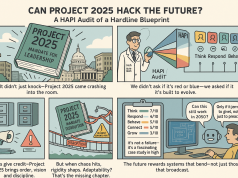As the skyline of New York City buzzes with the familiar liveliness, a silent transformation is reshaping the workplace—a shift towards remote work that is not just redefining where and how we work, but who gets to work in this new digital era. The advent of this change is poised to create a New Digital Divide, a chasm that could deepen the socioeconomic disparities in a city already grappling with inequality.
In the wake of the global health crisis, the pivot to remote work seemed like a watershed moment for workplace flexibility. The congested subways and bustling sidewalks saw a reduction in foot traffic, as many New Yorkers swapped their office attire for comfortable work-from-home alternatives. But this transition has not been uniform across the socioeconomic spectrum, laying bare the digital disparities that could shape the future of work in New York City.
The New Digital Divide represents a multi-faceted challenge that touches upon access to technology, the ability to work remotely, and the widening gulf between different income groups. For some, remote work has been a liberating force, offering flexibility and a respite from grueling commutes. For others, particularly in lower-income brackets and certain service-oriented sectors, the remote work revolution has been exclusionary, as their roles cannot be carried out from a laptop in a home office.
Access to reliable high-speed internet and the necessary tools to work effectively from home are not evenly distributed across NYC’s diverse neighborhoods. In upper-income areas, professionals seamlessly connect to their digital workplaces, while in underserved communities, many struggle with inadequate or non-existent internet service—placing them at a significant disadvantage in the remote work landscape.
Local labor experts point out the long-term implications of this divide. As businesses adapt and transition to hybrid or fully remote models, job opportunities could increasingly become the preserve of those who can afford the digital entry ticket. This could not only limit economic mobility for many New Yorkers but also restrict the talent pool for businesses that fail to acknowledge the breadth of potential outside of the digitally privileged.
Case studies of New York businesses show a mixed bag of responses. Some companies have taken proactive steps to support remote work capabilities across all employee strata, recognizing the value in diversity and inclusivity. Tech firms have emerged as frontrunners in providing digital tools and training, while other sectors lag, sometimes contributing to a workforce stratified by digital readiness.
The responsibility to bridge this digital divide does not rest solely on businesses; government intervention is crucial. Policies that promote equitable access to technology and high-speed internet, along with training programs to uplift digital literacy, are essential to prevent the remote work revolution from exacerbating existing inequalities.
As we lean into the future, New York must approach remote work as an opportunity to redress, rather than reinforce, the socioeconomic disparities. This will require collective efforts and innovative policies that ensure remote work is an inclusive evolution, not a selective privilege. Through local initiatives, corporate responsibility, and forward-thinking legislation, New York can become a model city where the digital landscape enables growth and opportunity for all its inhabitants.
We stand at a crossroads in defining the work culture of tomorrow. The path New York chooses could very well determine if the city remains a beacon of opportunity in an increasingly digital world—or if the bright lights of the skyline will cast longer shadows on the marginalized communities left on the far side of the New Digital Divide.

























